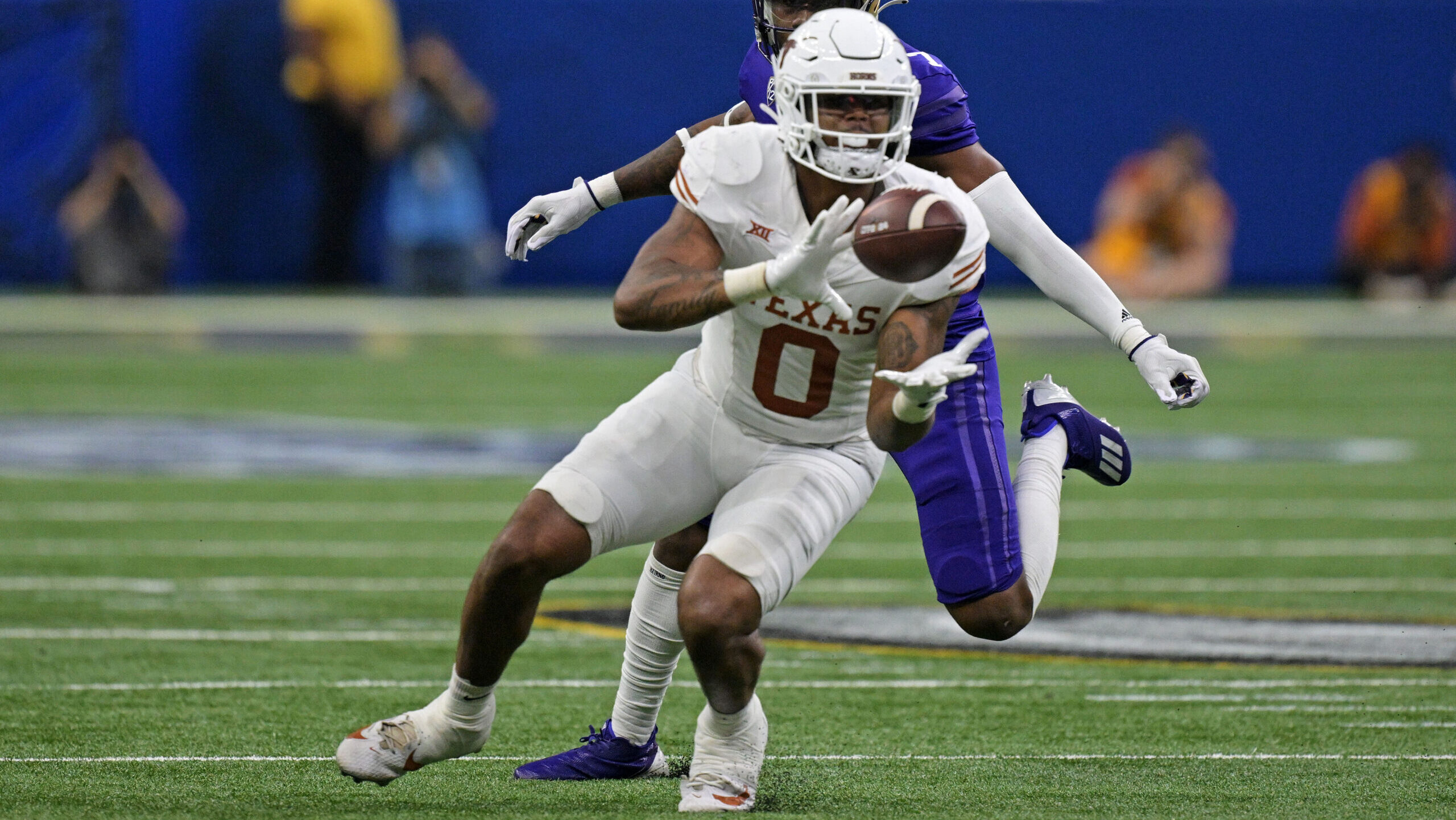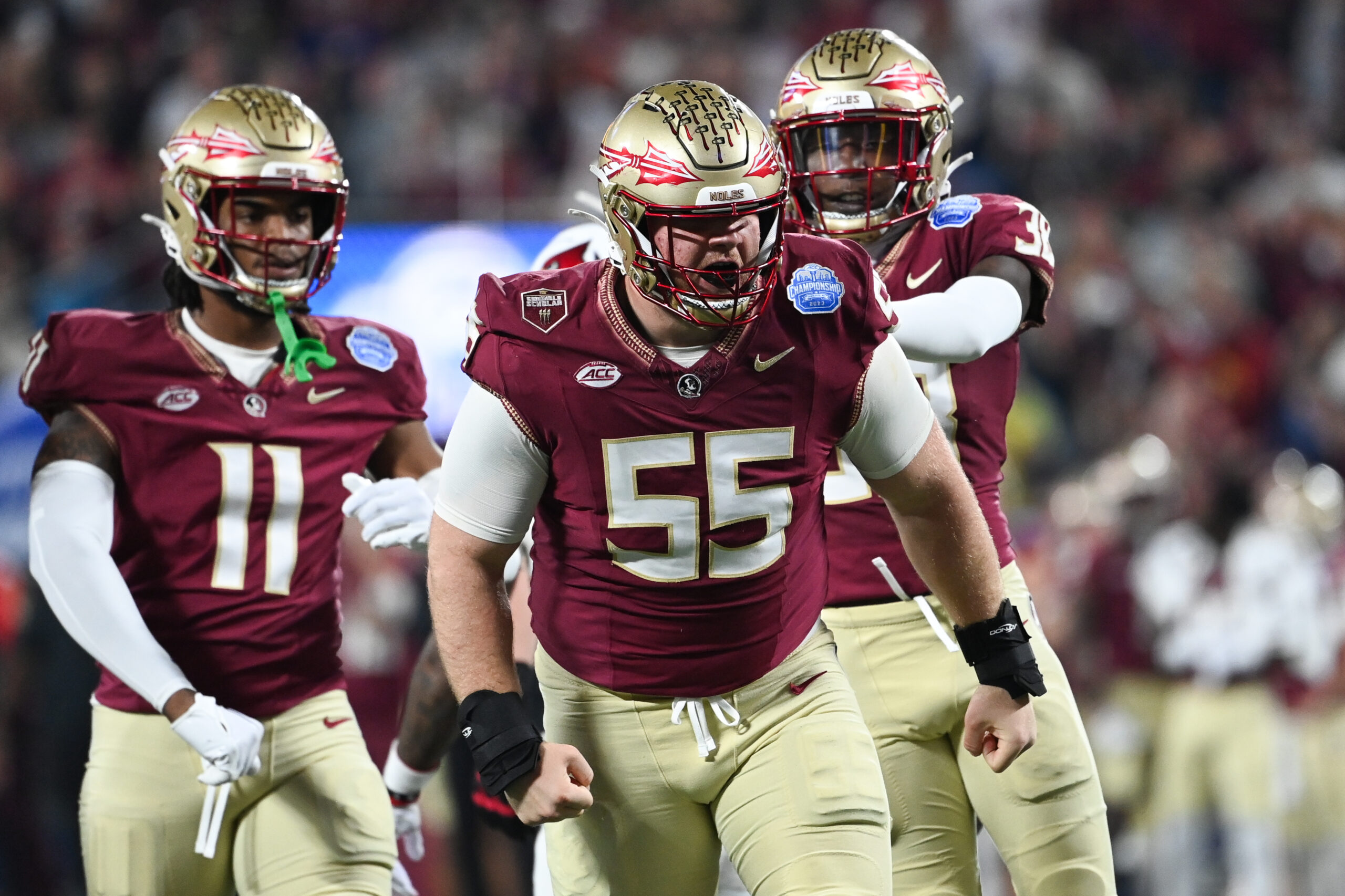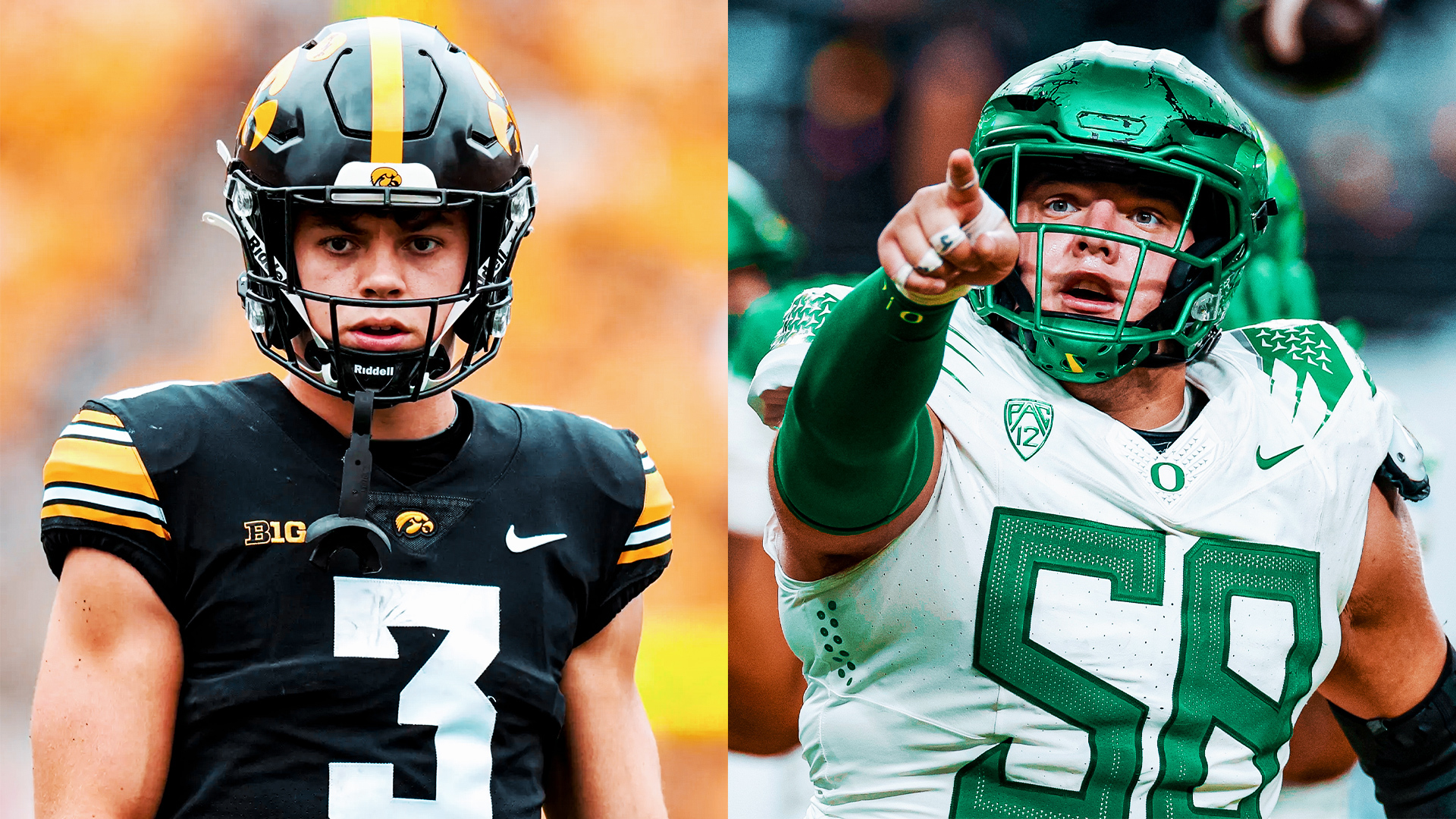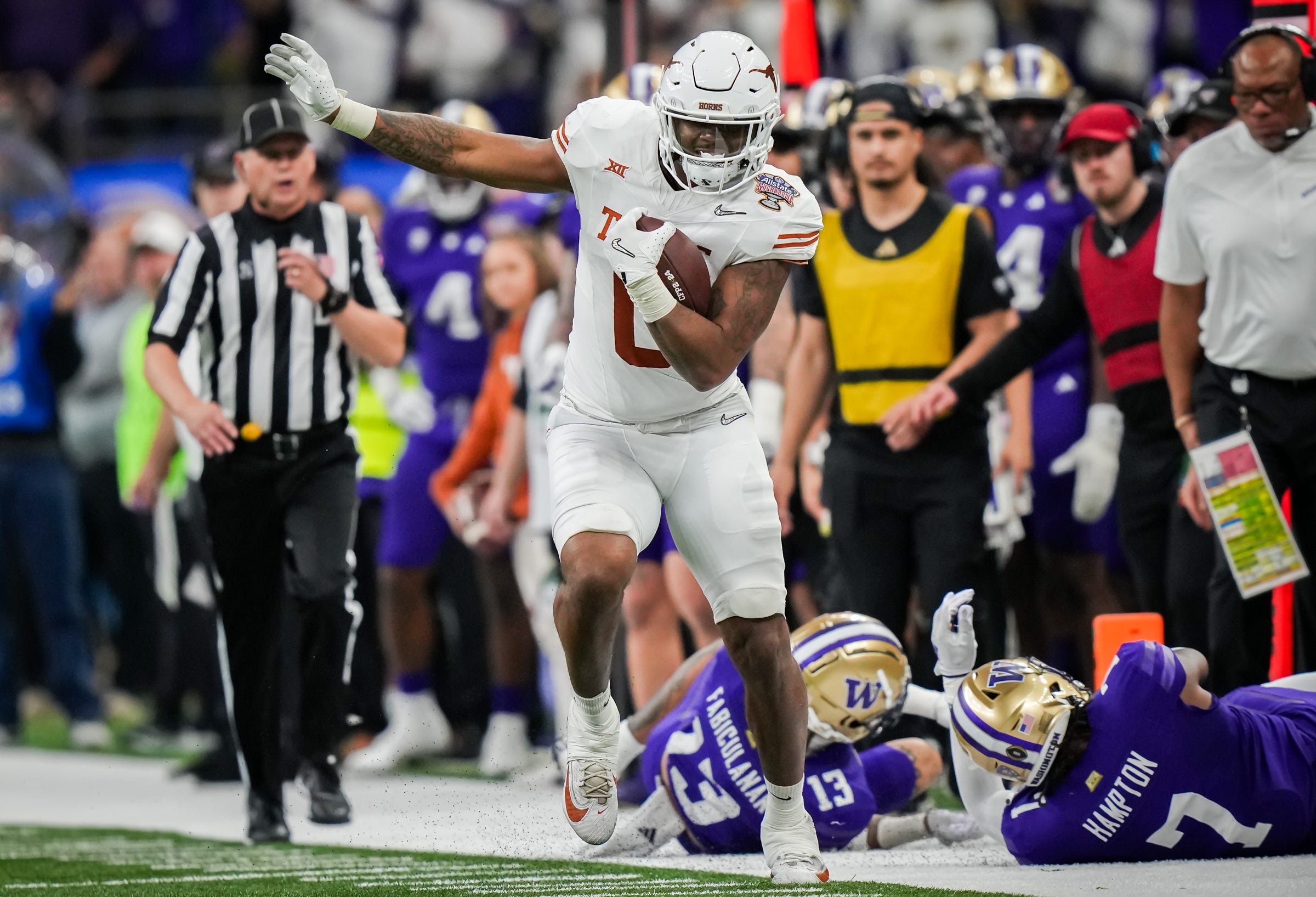NFL Analysis
1/14/24
7 min read
Has The Tua Tagovailoa Era Already Peaked For Miami Dolphins?
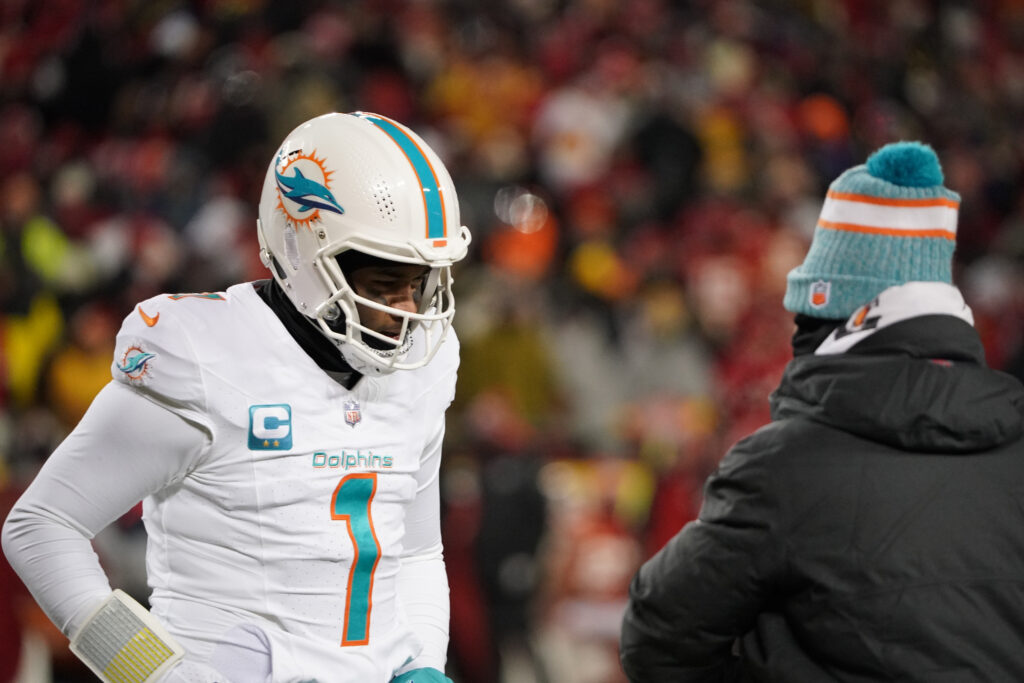
Another promising season for the Miami Dolphins came to a disappointing end. The Dolphins were down five starters on defense in the wild-card round, but the offense was the bigger disappointment in the 26-7 loss to the Kansas City Chiefs.
The Dolphins had a 29.7 percent success rate, according to TruMedia, the 27th-lowest rate in a playoff game since 2000. Miami’s loss to Buffalo in last year’s wild-card game was the 19th-lowest.
For as much of a pattern can appear in just two years, the Dolphins are developing a habit of playing their worst football at the end of the season. Here is Miami’s EPA per play on offense by game during the past two seasons.
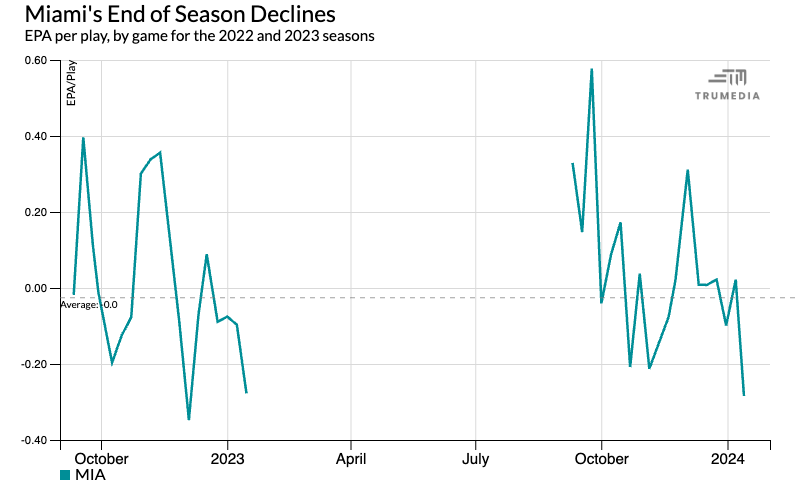
With the way the season ended and the failure to produce anything in the passing game against the Chiefs, the focus for the offseason will center on the offense and the ceiling of Tua Tagovailoa.
Is Tua's Time Up?
The immediate future for the quarterback is not in doubt; Miami picked up Tagovailoa’s fifth-year option, which will pay him a guaranteed $23.1 million for 2024. But that represents a bump from his $9.6 million cap hit in 2023.
That fifth-year option starts the Dolphins down the expensive quarterback contract path, which will alter how the team can build the roster. For a team already built around stars and big contracts, that’s a big leap.
Tagovailoa is already the last of the top 2020 quarterbacks to get an extension. This offseason was the first time this class was eligible for an extension. Joe Burrow, Justin Herbert, and Jalen Hurts all got big deals.
The Packers hedged on Jordan Love with a short-term extension covering any risks of the fifth-year option. Still, the 2023 season was a positive sign for the quarterback, and it would be hard to imagine the Packers not getting something done long-term.
That leaves more questions about Tagovailoa’s future than any of his contemporaries. It will be a question that lingers through Miami’s offseason.
Each drive against a good team and each failed fourth-quarter comeback becomes a referendum on what Tagovaila has done and can do as the quarterback in Miami.
We’ve seen this offense click when everything works, but when something goes wrong, the quarterback has not fixed the problem.
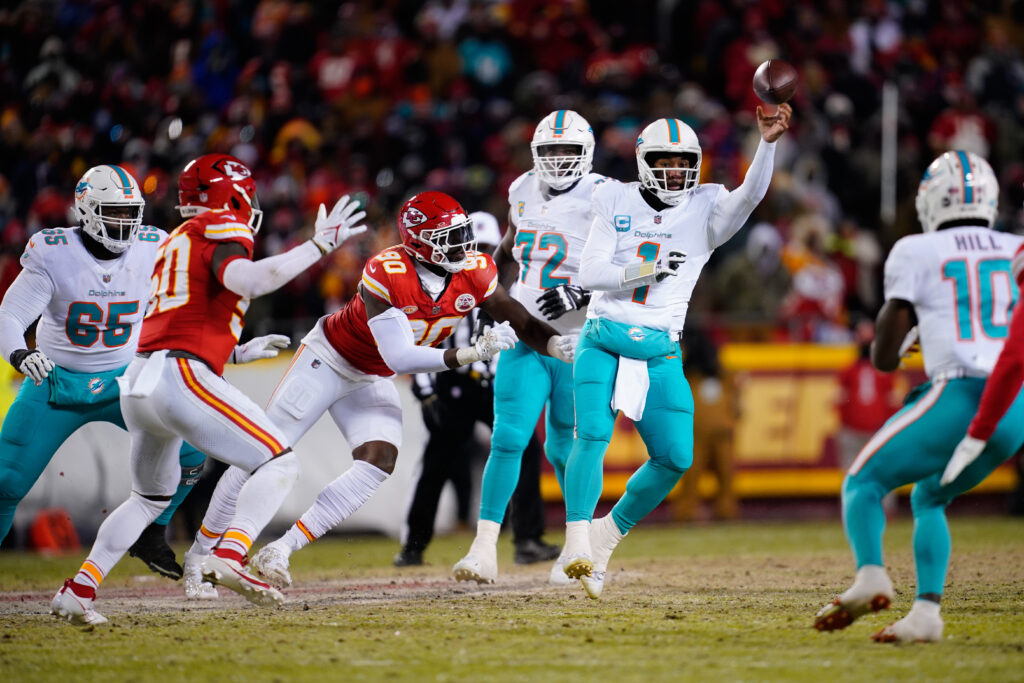
That’s a feature and a bug of this current offense, one built on timing and precision. Tagovailoa doesn’t typically get enough credit for his role in making that work. Words like “timing” and “anticipation” get thrown out, but there are few quarterbacks who could get the ball out as quickly and as far down the field as Tagovailoa did during the past two seasons.
Fewer would have the trust in the receivers to be where they’re supposed to be and the ability to place the ball accurately to the spot it’s supposed to be.
It’s a popular opinion to downplay the Miami offense as hiding Tagovailoa’s flaws, and to an extent it does. The quick throws over the middle and the league’s fastest wide receivers blowing by defenders can help mask a lack of top-tier arm strength that many of the league’s best quarterbacks possess.
But Tagovailoa’s release has also helped cover up an offensive line that has not effectively pass-blocked during the past two seasons. It was a unit that ranked 31st in ESPN’s pass block win rate this season.
This even goes back to the 2020 season when the Dolphins tried to cover their offensive deficiencies up by spamming RPOs. Tagovailoa was 14th in success rate when nothing about that offense should have been around average.
No Margin for Error
Yet, the way Tagovailoa has lifted the offense leaves little to no margin for error. When the defense sells out to stop a key element, there isn’t much of a Plan B. And because of the timing of the offense, when things go wrong, they look like they go really wrong.
We saw that when the Chargers and 49ers aggressively took away the middle of the field at the end of last season. And we saw a bit of that against Kansas City in the wild-card game.
The Chiefs did all they could to mess with Miami’s timing and clamp down on what they wanted to do. On Tagovailoa’s interception in the first quarter, the Chiefs rotated their safety look from two-high to single-high before the snap, then back to two-high at the snap. With Tyreek Hill pressed on the outside and a pocket closing in, Tagovailoa sailed a pass high for the pick.
Tagovailoa had one of his worst games throwing between the numbers, where he went just 9-of-17 and averaged -0.70 EPA per play.
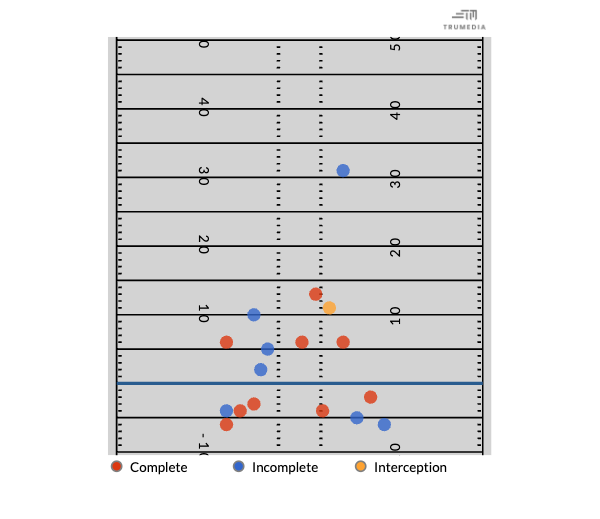
Without much of a downfield passing game, the Dolphins tried to go heavy on screens, but the Chiefs were all over those, too. Miami had an 18.2 percent success rate on 11 throws at or behind the line of scrimmage. Twenty-five of Tagovailoa’s 39 pass attempts were short of the sticks.
Much of the Dolphins' schematic plan was covered up, and there were no second-reaction or out-of-structure answers. Miami had nothing else to try.
That has become the biggest issue for Tagovailoa and the Dolphins in the games they have struggled. It’s the one that needs to be dissected the most to figure out what the ceiling of this marriage of quarterback and offense can be.
What Comes Next?
The top-level play of quarterbacks around the league now, more than ever, centers around the way a quarterback can create offense when the answers aren’t there.
While Tagovailoa has been more than the Dolphins could have hoped in structure — he is, after all, fourth among quarterbacks in EPA per play over the past two seasons — there’s no bigger gap between when things are going right and wrong than there is for the Dolphins.
Perhaps there could be a schematic fix for that, too. Maybe with more trust in an offensive line to hold up deeper into the play, Miami could have longer-developing routes that would allow more time for readjusting. Or maybe it’s this way because the quarterback needs it to be.
One thing is clear, the Dolphins need a counter move. Something has to change. The development of a run game was a positive this season, but it didn’t help when defenses suffocated the pass.
It will be difficult for the Dolphins to hang with the top teams if the problem-solving can’t be done on the fly. Miami has this offseason to figure out what the root cause is and how to fix it.
That could come from some personnel changes up front. It could come from a revamped way to run this offense. Or it could come with the realization that something more is needed from the quarterback position — finding Mike McDaniel’s Matthew Stafford.
There’s no harm in asking the questions, but Miami is running out of time to find the answer.


